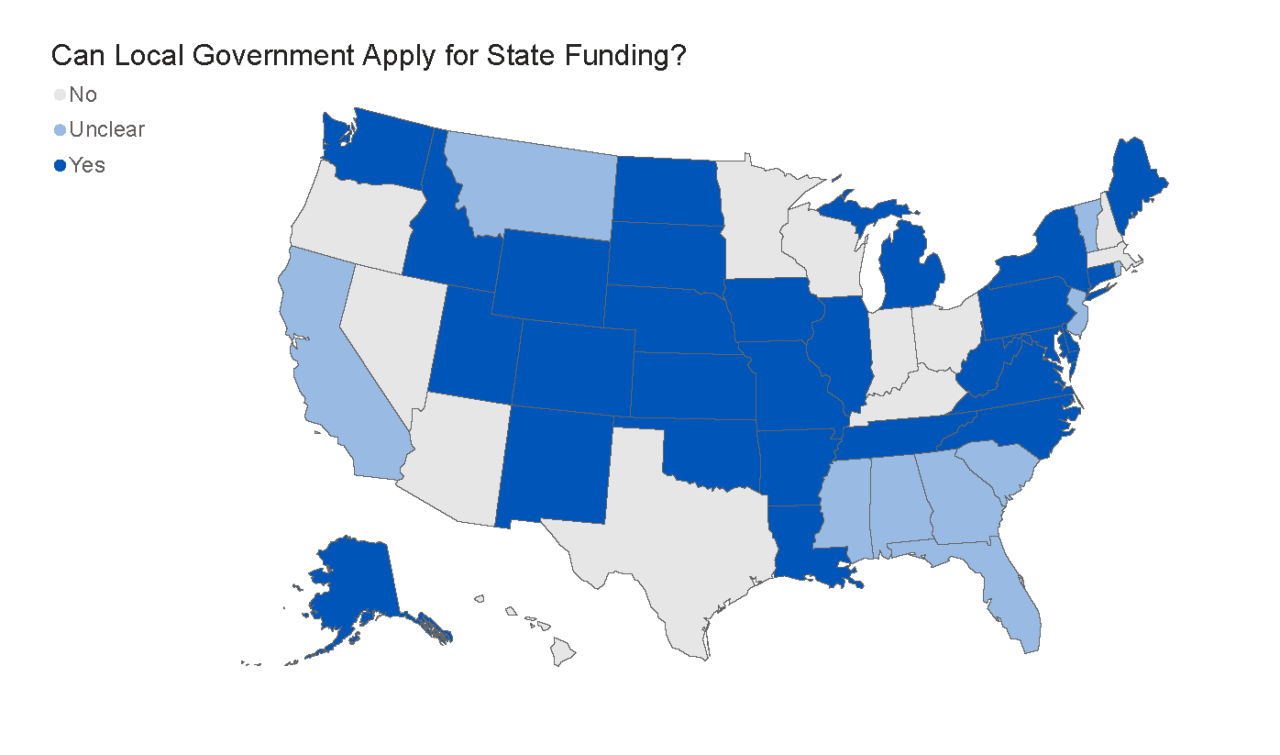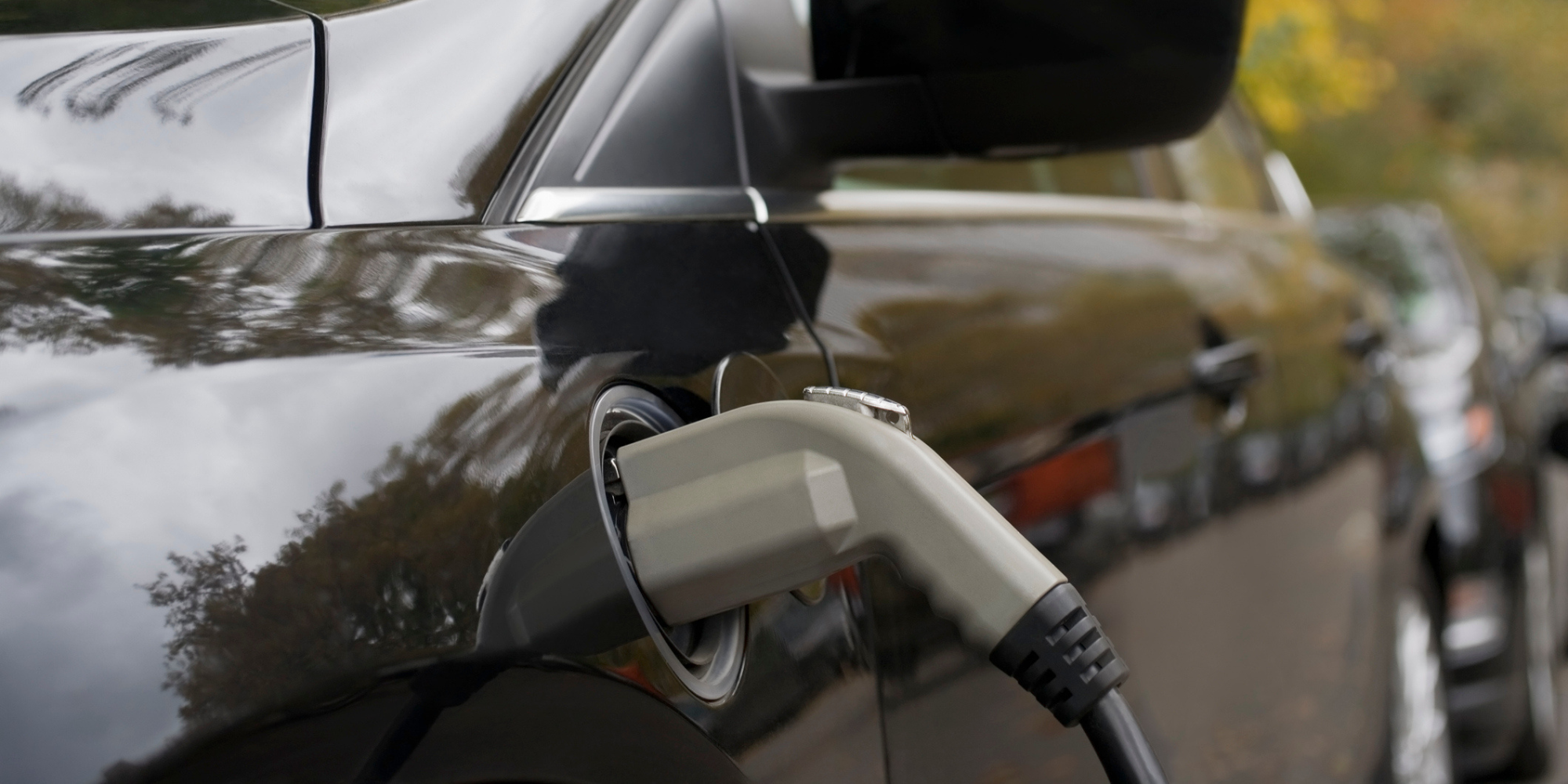The Bipartisan Infrastructure Law (BIL) establishes two programs for building out a national electric vehicle (EV) charging network. The first and largest is the National Electric Vehicle Infrastructure (NEVI) Formula Program, which over the next five years will send $5 billion to all 50 states, the District of Columbia and Puerto Rico to build chargers every 50 miles along key travel routes. Local governments can check their State NEVI plan at the links below and see if local governments will have direct access to their state’s NEVI funding.
The second EV program is the Discretionary Grant Program for Charging and Fueling Infrastructure, often referred to as Community Charging, which provides direct access to local governments and aims to fill in gaps to a national charging network. The program is designed to prioritize rural, low-moderate income neighborhoods, and communities with low ratios of private parking, or high ratios of multiunit dwellings. The timeline for Community Charging was initially set for early 2023, but it could be released sooner.
Congress designed NEVI to expand access to EV charging locations along the national highway charging corridors to further expand and standardize the national EV charging network. In 2022 the NEVI program is providing states, the District of Columbia and Puerto Rico with $615 million in funding for EV chargers, also known as electric vehicle supply equipment (EVSE). To receive this money, states were asked to develop their own NEVI plans and turn them in to the new Joint Office of Energy and Transportation by August 1, 2022. The Joint Office of Energy and Transportation reviewed these plans and approved them last month., However, state NEVI plans will have the opportunity to be improved upon over time, and communities should make sure that what is being planned near them is appropriate and that their community has expressed their interests and concerns.
State NEVI Plans
To get approval for NEVI funding, states had to follow specific program guidelines. EVSEs must be:
- Placed within one mile of a designated highway corridor,
- No more than 50 miles apart,
- In working order over 97 percent of the time,
- In close proximity to other infrastructure such as public restrooms and prioritize rural or disadvantaged communities.
States were notably required to include local government stakeholders in the plan development. Given this guidance, NLC reviewed each state NEVI plan, and found that 35 included explicit inclusion of municipalities in planning, 13 did so indirectly through municipal organizations and four were unclear whether they met that goal.
Next Steps for Local Leaders
Local leaders should begin by becoming familiar with their state’s NEVI plan. Each state NEVI plan identifies sites that meet program requirements, outline the infrastructure development bidding process and review EVSE ownership structure. If local leaders see that their municipality is not in one of the identified areas for NEVI funding, they will want to start working with federal and state officials to prepare for the Community Charging Grants coming out later this year.
Local leaders with a NEVI-designated potential EVSE site in their jurisdiction should:
- Be involved in the development process by first identifying if local governments can directly apply for NEVI funds through the competitive bidding process. This information can be found in the map and data dashboard below.
- Identify potential local or state funds to meet the federal match, as NEVI only will cover 80 percent of the costs for new EVSEs. For a list of ways to meet a federal match, local leaders can read this blog from NLC on 10 Ways to Make Your Local Match for Federal Projects.
- Check and see if private or public utility providers have resources to tap into, especially if no state funding is available. States with utility funding are identified in the interactive table below.
- Prepare to work with state or private partners. Municipal leaders should check out NLC’s EV guide, which includes key questions for local officials to ask as they prepare for EVSEs, municipal examples and a glossary of key terms.

If working with private developers, it is important to remember that local government retains control over zoning and the permitting process, which can influence where EVSEs are placed in a community. Additionally, developers may want to do public outreach in the community, as some states highlight this as a priority to score highly in competitive grants, so facilitating this interaction as local leaders can increase trust and transparency in the planning process. Some private EVSE companies may also be willing to provide funding for the federal match.
For a full analysis of all 52 plans, check out the interactive table below. Here you can find a link to your state’s ava plan, the availability of state and private funds, municipal involvement and more. Additional information on how to implement EVSE in your community can be found at NLC’s webinar Ready to Rebuild: Rolling Out Electric Vehicle Charging in Your Community.











